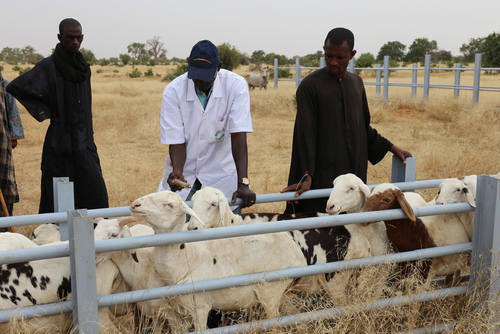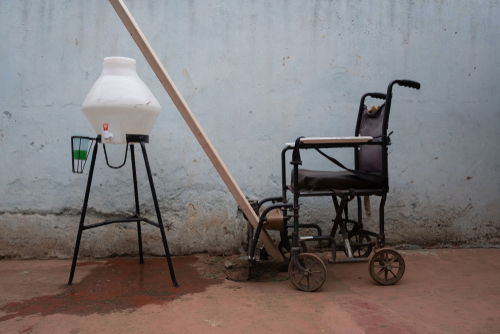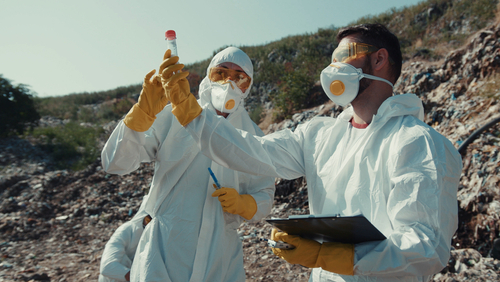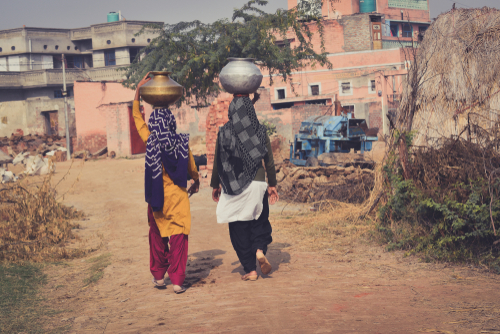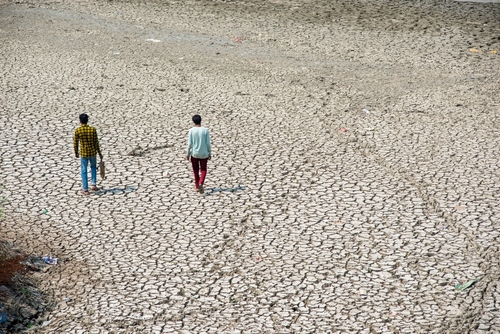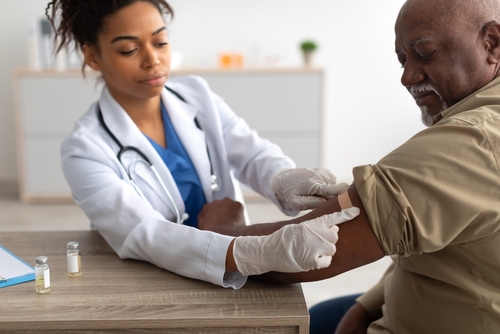May 08, 2023

Higher SARS-CoV-2 hospitalizations among infants and young children in South Africa.
A recent analysis of data from March 2020 to February 2022 revealed an increase in SARS-CoV-2 testing, diagnosed cases, and hospital admissions among children under the age of 18 after the first wave; during the fourth wave, hospitalization rates of infants and children under five years of age surpassed that of adults in South Africa. Children and adolescents with one or more existing comorbidities faced more severe health outcomes associated with COVID-19 than those without, indicating the need to expand vaccination recommendations to children aged 5 to 11 years. [Journal of the Pediatric Infectious Diseases Society]
Reduced crop yields significantly impact young children’s survival in Burkina Faso.
Researchers investigated the effect of crop yield deficits during different phases of early life development on child survival in rural farming populations in Burkina Faso. Exposure indices were calculated for five periods: 1) 12 months before conception; 2) in utero; 3) the first two years of life; 4) between two and five years of age; and 5) from birth to five years of age. Child survival was most significantly affected when the Food Crop Productivity Index (FCPI) was low between the first six months and two years of age. Children’s dependency on cereal crops starting at the age of six months old may result in a greater vulnerability to crop yield reductions at that age. These findings are particularly alarming given projections of further crop yield reductions in sub-Saharan Africa due to climate change. [American Journal of Epidemiology]
The burden of chronic respiratory diseases has increased since 2019.
Global, regional, and national estimates of the burden of chronic respiratory diseases (CRDs) between 1990 and 2019 show that in 2019, CRDs were the third leading cause of death and accounted for 4 million deaths worldwide (95% CI 3.6 – 4.3). Since 1990, the total number of deaths and prevalence of CRD have increased by 28.5 percent and 39.8 percent respectively, while the age-standardized rates of CRD burden decreased from 1990 to 2019. Low- and middle-income countries saw a greater number of disability-adjusted life years and deaths attributable to CRDs compared to richer countries, highlighting global disparities in CRD diagnostics and therapeutics. [eClinicalMedicine]
Antibiotics and resistant E. coli identified in groundwater in informal settlements.
Groundwater sources in Kisumu, Kenya – critical in informal settlements where running water is often scarce – were tested for the antibiotics sulfamethoxazole and trimethoprim. The groundwater detection frequency of sulfamethoxazole in Kisumu’s informal settlements was 14.3 percent, whereas trimethoprim was undetected. Furthermore, Escherichia coli isolates were identified in almost all (98 percent) groundwater samples, and six percent were resistant to sulfamethoxazole; however, no E. coli isolates were detected in samples where sulfamethoxazole was identified. [PLOS Water]
Tuberculosis incidence is negatively correlated with GDP.
Researchers reconstructed the geographical evolutionary pathway of the incidence of tuberculosis (TB) in 173 countries and territories from 2010 to 2019 to better understand the socioeconomic determinants of TB trends. The map shows that low- and middle-income countries are more vulnerable to TB than high-income countries, pointing to a negative association between TB incidence and GDP per capita. Furthermore, countries in later development stages experience lower rates of TB incidence, likely due to advancements in sanitation, healthcare access, and education. The model predicts that overall TB incidence rates will fall significantly in 2030, with 26 out of the 173 countries expected to eliminate TB by then. [BMC Public Health]
Unmitigated infectious disease outbreaks are expected to cause global pandemics.
Age-structured disease transmission models were integrated into a global pandemic simulator to model the dynamics of emerging infectious diseases (EIDs) like COVID-19. The simulator, which spanned 3,157 cities worldwide, predicted that EIDs would most likely spread globally and cause a pandemic if left unmitigated, regardless of geographical origin. In this model, almost three-fourths of the global population would be infected by the end of the first year of the pandemic. Control measures like travel restrictions and social distancing were effective at reducing disease transmission. Mitigation efforts were further strengthened by inter-country relationships and containment measures enacted by high-income countries. [PNAS Nexus]
Double burden of child malnutrition observed in east and southern Africa.
National Demographic and Health Surveys conducted between 2006 and 2018 were used to characterize socioeconomic and rural-urban inequalities in the prevalence of child malnutrition in 13 eastern and southern African countries. Undernutrition was most common among children from the poorest wealth quintiles and who had mothers with the lowest education level, while overnutrition was observed among children from the richest households and who had mothers with the highest education level. Comoros, Rwanda, and Mozambique had double burdens of overnutrition and undernutrition that were greater than the regional average prevalence, likely indicative of the region’s ongoing systemic challenges such as poverty, food insecurity, climate change, and conflict. [PLOS Global Public Health]
High temperatures increase dengue transmission worldwide.
A systematic review and meta-analysis of 106 peer-reviewed articles evaluated the effect of high temperatures and heat wave events on dengue transmission in various climate zones worldwide. For every 1°C increase in temperature above a specified threshold, there was a 13 percent increase in the risk of dengue infection. Heatwave events had varying effects on dengue transmission, with both positive and negative impacts observed in the included studies. A clearer and more standardized definition of heatwave events will likely help accurately assess the impact of such events on dengue infection risk. [eBioMedicine]
Global spending of $33 billion on Strep A vaccine R&D can yield high returns.
A model of optimal global spending on the research and development (R&D) of a group A Streptococcus vaccine resulted in US$1.63 trillion in benefits and a return of 22.3 percent per year for thirty years at a spend of US$33 billion. The creators of this model emphasize the need for national and international policymakers to accelerate Strep A vaccine R&D, as private sector investment is insufficient to meet the optimal spending amount. Direct, public funding can help achieve this amount and reduce the global burden of Strep A. [npj Vaccines]
Image from Canva

